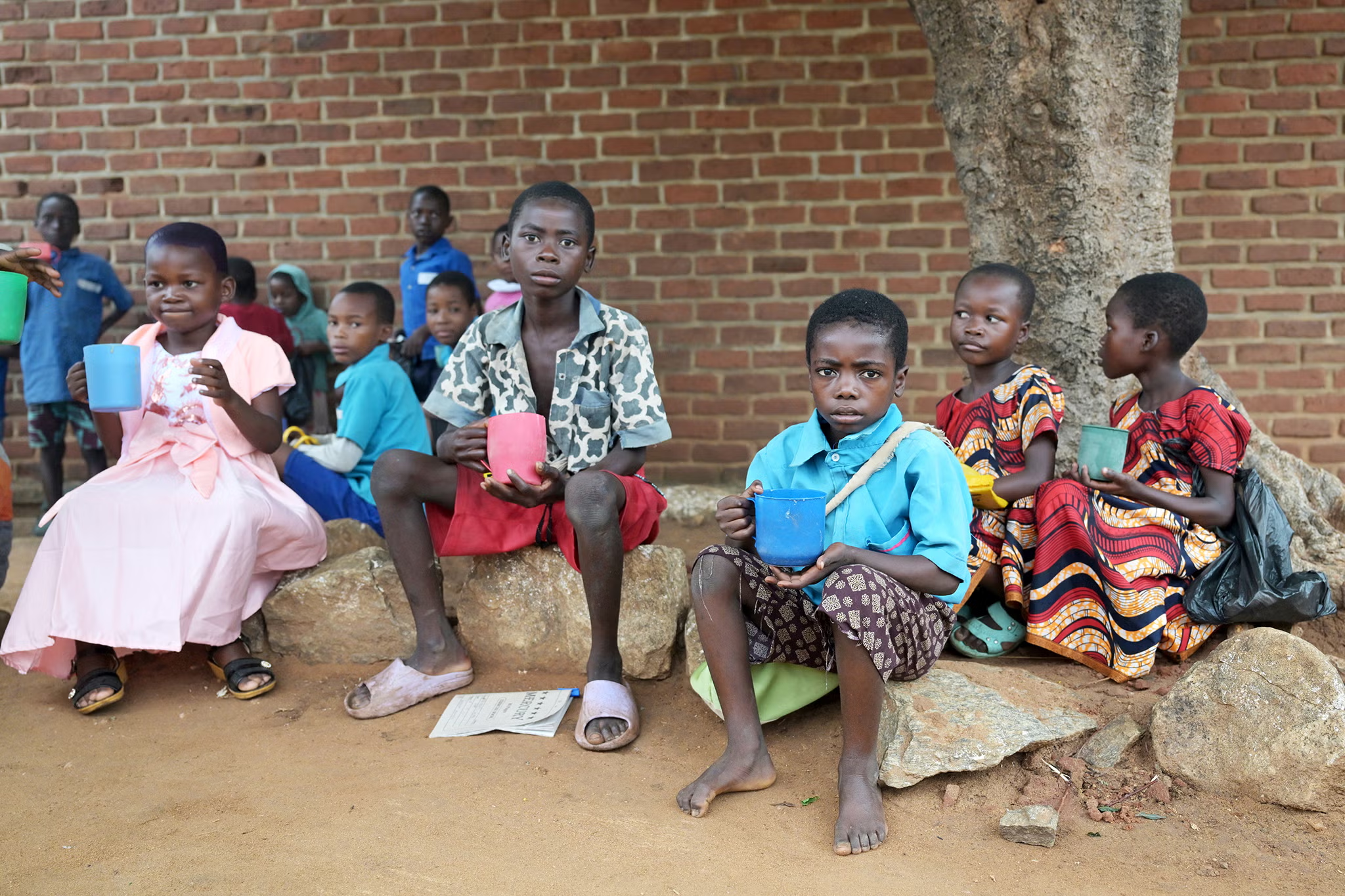The Southern African region is currently facing an unprecedented crisis as the worst drought in a century threatens the lives of millions, particularly children. The devastating impact of the drought, exacerbated by the El Niño weather cycle, has left millions without adequate food and nutrition.
Crops have failed, food prices have soared, and families are struggling to survive. Humanitarian organizations, including Mary’s Meals, are working tirelessly to mitigate the crisis by providing school feeding programs that serve as a crucial lifeline.
The Impact of the Drought on Food and Agriculture
The ongoing drought has severely affected agriculture in Southern Africa, particularly in Malawi, Mozambique, Zambia, and Zimbabwe. The region largely depends on subsistence farming, with families growing their own food for survival.
However, for the third consecutive year, unusually high temperatures and a lack of rainfall have devastated crops. Many farmers have had to replant multiple times, but the absence of rain has made it nearly impossible for crops to grow.
The consequences of this agricultural collapse have been dire. Maize, a staple food in the region, has become increasingly scarce, and the price has doubled over the past year.
Cooking oil and other basic commodities have also seen significant price hikes, making it difficult for families to afford even the most essential food items. In Malawi alone, the cost of fertilizer has risen by 64% since 2023, further limiting farmers’ ability to grow crops.
Read : Dozens of African Migrants and Refugees Kidnapped and Tortured for Ransom in Libya
Six countries have declared a state of disaster, highlighting the gravity of the situation. With little to no harvest expected in 2025, the food crisis is only worsening, pushing millions of people to the brink of starvation.
Read : Is a Sixth Ocean Really Going to Form in Africa?
For children, the impact is particularly severe. Malnutrition rates are rising, with an estimated 21 million children suffering from hunger across the region. Many are eating just one meal a day, often provided by school feeding programs.
School Feeding Programs: A Lifeline for Children
In response to the growing crisis, humanitarian organizations have been working to provide relief. One such initiative is led by Mary’s Meals, a global charity that serves school meals to over 2.4 million children across 16 of the world’s poorest countries. Malawi is home to the largest school feeding program under Mary’s Meals, reaching more than 1 million children every day.
Magnus MacFarlane-Barrow, the founder and CEO of Mary’s Meals, recently visited Tafika Primary School in Malawi to assess the situation. He described the conditions as “extreme,” with many children surviving on just one meal per day. At Tafika Primary School, students rely on porridge provided by Mary’s Meals, which has become a crucial source of nutrition.

Desire, a 12-year-old student at Tafika, walks 6 km to school every day. His mother, who sells small fish, struggles to provide food for him and his siblings. Before the feeding program started, Desire often went to school on an empty stomach, making it difficult to concentrate.
He recalls feeling weak and unable to hold his pen properly due to hunger. Thanks to Mary’s Meals, he now receives a nutritious meal at school, which helps him focus on his education.
The feeding program has not only improved children’s health but has also increased school attendance. More children are enrolling in school because they know they will receive food, giving them a chance at a better future.
However, with resources stretched thin, humanitarian organizations are in desperate need of additional funding to expand their efforts and reach more children in need.
The Growing Humanitarian Crisis and the Need for Urgent Action
As the drought continues, families across Southern Africa are facing an uncertain future. Hunger has become widespread, with even adults struggling to find food.
Agness Wakili, the head teacher at Tafika Primary School, has witnessed firsthand how the drought has affected her students and their families. She explains that “each and every family in our district suffers from hunger.”
The situation is expected to worsen in the coming months as food supplies dwindle. Farmers who replanted crops in December after delayed rains are still facing poor harvests. The maize is stunted, and many crops will not mature properly. Families are left with little to eat, and for many, school feeding programs are their only hope.

Despite the dire circumstances, there is still a glimmer of hope. Organizations like Mary’s Meals are making a tangible difference in the lives of children by ensuring they have at least one meal a day. However, their efforts alone are not enough. International support and humanitarian aid are crucial in addressing the crisis and preventing further suffering.
Governments, NGOs, and individuals must work together to provide immediate relief and implement long-term solutions to combat food insecurity.
Investments in sustainable agriculture, irrigation systems, and drought-resistant crops can help communities become more resilient to climate change. Additionally, expanding school feeding programs can ensure that children receive the nutrition they need to thrive.
As the world watches this humanitarian crisis unfold, urgent action is needed to prevent further tragedy. The children of Southern Africa cannot afford to wait. Their survival and future depend on immediate intervention, and it is up to the global community to respond to their cries for help.
let’s enjoy few years on earth with peace and happiness….✍🏼🙏

